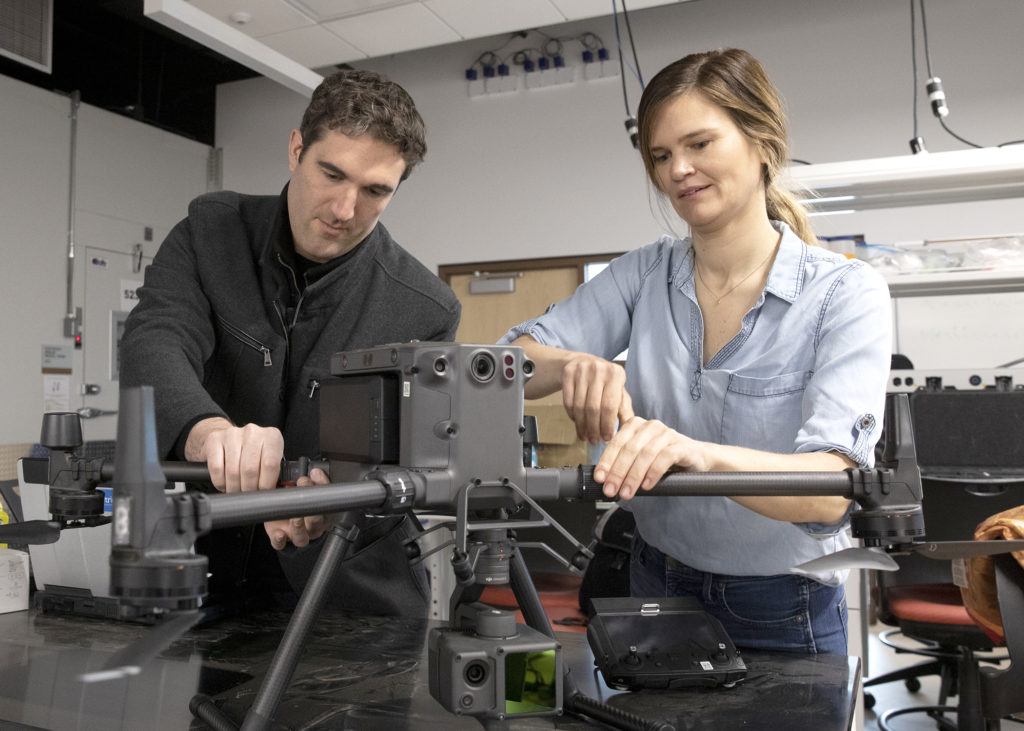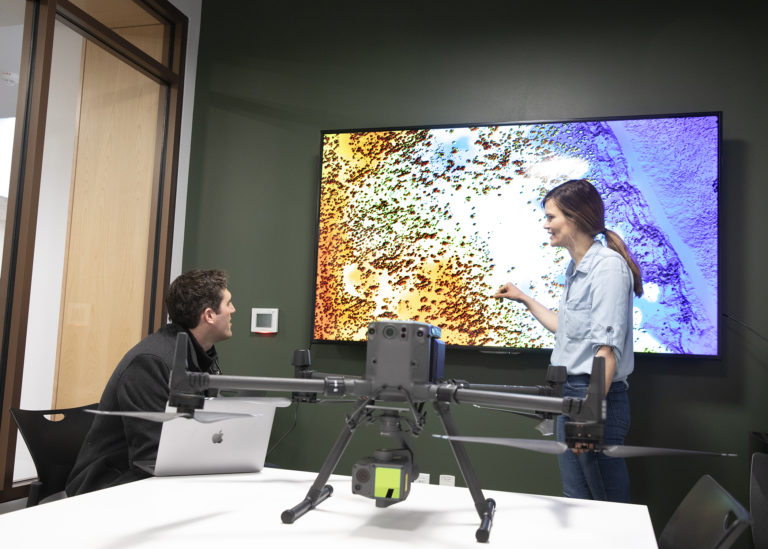For Utahns old enough, who can forget the Great Salt Lake City Floods of 1983? Record-breaking precipitation the winter before led to a spring runoff from the mountains that temporarily turned downtown streets into raging rivers.
While flooding is not the worry it nearly was 40 years ago for the Salt Lake Valley, it’s still vital that scientists and policy makers understand the impact snowpack along the Wasatch Mountains has on our quality of life, not just to prevent future flooding but also to deal with the more immediate problem of drought.
Two University of Utah professors will receive up to $7 million in funding from the National Oceanic and Atmospheric Administration (NOAA) to help NOAA better forecast how mountain snowpack contributes to our water supply. The U and their work will be part of a new consortium of 28 non-profit organizations, government and industry members, and partners that will research water resources and develop more accurate models for predicting catastrophic flooding. This group, the Cooperative Institute for Research to Operations in Hydrology, or CIROH, will be based at the University of Alabama and will receive up to $360 million to support research efforts across the consortium and its partners. Brigham Young University and Utah State University will also be members of the CIROH consortium.

Civil and environmental engineering assistant professor Carlos Oroza (left) and geography assistant professor McKenzie Skiles with a remote sensing drone equipped with a lidar instrument that produces imagery of mountain snowpack. For Utahns old enough, who can forget the Great Salt Lake City Floods of 1983? Record-breaking precipitation the winter before led to a spring runoff from the mountains that temporarily turned downtown streets into raging rivers. While flooding is not the worry it nearly was 40 years ago for the Salt Lake Valley, it’s still vital that scientists and policy makers understand the impact snowpack along the Wasatch

Oroza (left) and Skiles look over lidar imagery of mountain snowpack.
The team also wants to involve “citizen science” in the collection of data by employing people such as backcountry skiers with avalanche probes to obtain additional snow-depth readings.
“The snowpack provides the majority of surface water resources to meet local water demand, up to 80% or more, and much of what we don’t get downstream is recharging groundwater, and we want to use that water in the most efficient way possible,” Skiles says. “Developing understanding of how much snow we have and when it will melt will help NOAA provide improved predictions leading to better water management.”
Their research will not only benefit Utah but the entire western U.S. where drought conditions are severe, both say.
CIROH will advance water research in support of NOAA’s Office of Water Prediction and reinforce the work of the National Weather Service and National Water Center through collaboration across the scientific community in four broad research themes:
- Water resources prediction capabilities.
- Community water resources modeling.
- Hydroinformatics.
- Application of social, economic, and behavioral science to water resources prediction.
Additionally, CIROH will create curriculum programs across its consortium members and partners to prepare the next generation of water professionals.
“We now begin the real work of coproducing research with NOAA and other partners that will benefit society and provide learning opportunities for students for years to come,” said University of Alabama civil, construction and environmental engineering professor Steven J. Burian, who will serve as the executive director of CIROH. Burian until recently was a professor of civil and environmental engineering at the University of Utah. “The research innovations delivered by the Cooperative Institute will improve forecasts of floods and droughts, increase efficiency of water resources management, protect water quality and empower stakeholders to make confident and timely decisions.”
Story written by: Vincent Horiuchi, College of Engineering
